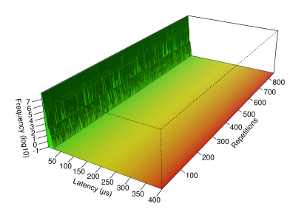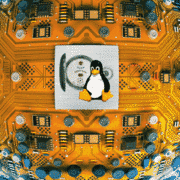Dates and Events:
|
OSADL Articles:
2023-11-12 12:00
Open Source License Obligations Checklists even better nowImport the checklists to other tools, create context diffs and merged lists
2022-07-11 12:00
Call for participation in phase #4 of Open Source OPC UA open62541 support projectLetter of Intent fulfills wish list from recent survey
2022-01-13 12:00
Phase #3 of OSADL project on OPC UA PubSub over TSN successfully completedAnother important milestone on the way to interoperable Open Source real-time Ethernet has been reached
2021-02-09 12:00
Open Source OPC UA PubSub over TSN project phase #3 launchedLetter of Intent with call for participation is now available |
Linux real-time: New stable release available -
but next one depends on more support from industrial users
OSADL has successfully completed the release procedure of the so-called "Latest Stable" real-time Linux kernel. This especially applies to the products and services of OSADL member companies
• AMD, Intel and Texas Instruments for processors and controllers,
• Eltec, Kontron and Phytec for computer boards and modules,
• IMMS, Linutronix/Elbe, Pengutronix/Ptxdist, Sysgo/Elinos, Windriver/Yocto for board support packages,
and to other members' industrial systems that all are under continuous test at the OSADL QA Farm. However, when a subsequent release will become available depends on more support from industrial users.
What was deemed impossible, is reality now
Some time ago, the available RTOS kernels had to be retrofitted whenever a new technology such as an advanced processor design or a faster communication protocol became available. The tremendous efforts required for such retrofits led to the idea that it would be much easier to turn a general-purpose operating system into a real-time operating system than to  repeatedly equip all RTOS kernels with the new technologies – a task, however, that rather was a redesign than a mere extension due to core technologies affecting the overall system. Most operating system experts were convinced that it was completely impossible to render an operating system real-time capable as an afterthought. But the Open Source way to develop Linux made it possible which is confirmed by a large number of OSADL QA Farm systems running the newly released "Latest Stable" Linux 3.12-based real-time kernel: Even during a one-year measurement with a wide variety of load scenarios, a minimum latency without any outliers was achieved as exemplified in the Figure.
repeatedly equip all RTOS kernels with the new technologies – a task, however, that rather was a redesign than a mere extension due to core technologies affecting the overall system. Most operating system experts were convinced that it was completely impossible to render an operating system real-time capable as an afterthought. But the Open Source way to develop Linux made it possible which is confirmed by a large number of OSADL QA Farm systems running the newly released "Latest Stable" Linux 3.12-based real-time kernel: Even during a one-year measurement with a wide variety of load scenarios, a minimum latency without any outliers was achieved as exemplified in the Figure.
Developing robust technology is only the first step – other must follow
The fact that a number of selected Linux kernel versions can be equipped with real-time does by far not mean that the stock Linux kernel provides real-time now. Although about 90% of the original real-time patches made it into the mainline kernel, the remaining parts still wait to be streamlined and merged. And even when all patches will be upstreamed, continuous maintenance of real-time aspects in the context of the mainline kernel will be needed.
How to resume provision of real-time Linux and tackle future maintenance?
Formerly real-time Linux development support was driven by specific needs resulting in funding being unstable. Independent continuous funding and support of real-time Linux, however, is OSADL's core mission. It was founded as a member organization to take care of Open Source software for the industry and, thus, should follow in the footsteps of the former supporters. Fortunately, OSADL has grown to nearly 50 member companies and is able to shoulder from its current budget about half of the required funding to resume maintenance and provision of the real-time patches. The other half must be provided by new members and external contributors. Long-term stability though requires more than mere maintenance of the status quo; the community of real-time Linux users, therefore, additionally needs to put together the funding for mainlining the remaining out-of-tree patches. This upstream submission should be started as early as possible, since even the smallest piece of code that can be merged into mainline will reduce the required maintenance of the patches. Should all code of the current patches be upstreamed to mainline one day, it is the declared goal of OSADL to provide the funding of the remaining maintenance on a long-term basis without depending on external help.
There are many ways to contribute
The most evident step to contribute is, of course, to join OSADL as a member. In addition, OSADL has created in close collaboration with its members and other interested parties a number of ways how to help:
• Temporary upgrade of the OSADL membership level, e.g. from bronze to gold, if applicable
• Commissioning of individual work packages of real-time software components
• Conclusion of a Service Level Agreement
• Individually tailored funding
Given the fact that the real-time patches are used in numerous commercial industrial products, there is hope that a sufficient number of manufacturers and vendors can be motivated to join in and help an up to now successful project stay so in the future. Considering how little the requested contribution is, using real-time Linux still mostly is a free ride.
- Files:
 Linux-Realtime-Figure_02.pdf
Linux-Realtime-Figure_02.pdf





